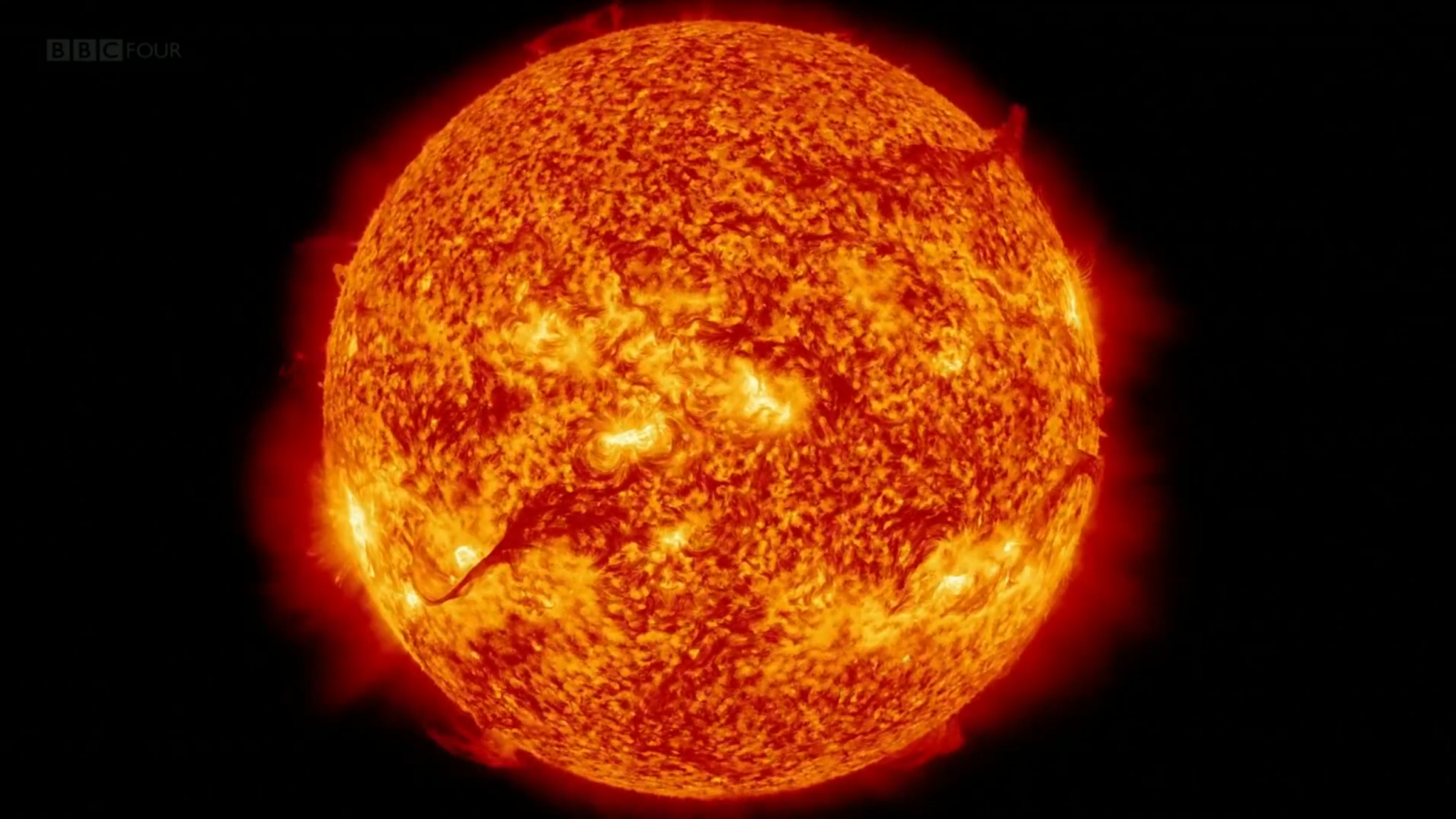In Dread and Promise

The crowd was mostly young. Bookworms, sweatered paramours, and fans of underground rock slowly filled the Edinburgh Festival Theatre in anticipation of a performance that would end the 2016 Edinburgh International Festival. We sat on the upper tier, far from the stage and yet able to see every nook and cranny. The theatre’s curvature made it appear as though we were on the edge of a concave lens, just a short lean away from tipping ourselves into the hundreds of seats below.
The program read: “Mogwai & Mark Cousins”. We were there to witness a non-narrative film of archived footage assembled by Mark Cousins called Atomic, Living in Dread and Promise. The feature was scored by the Scottish band Mogwai, with many in attendance solely to see them play.
And that is what they did. With no bombast or introduction of any kind, they strolled out into the orchestra pit, equipped themselves, and began the show. Their strides out were greeted with mild cheers silenced quickly by the dimming lights and deafening volume of their instruments. The vibrations reached into our bones as a large projection illuminated the space above the stage. A man’s face appeared. He began, “The government has decided, that in the present state of international tension, you should be told how best to protect yourselves…”
– – –
Atomic is a documentary about nuclear power. Its history, achievements, shortfalls, fears, and potential. It is a true archivist’s film. Visual montages that offer a comprehensive guide to the public understanding of nuclear energy. Cousins is a filmmaker and outsider, sharing with us perspectives on each side of the coin, from the bombings in Japan to the medical isotopes used in cancer treatments. Much of his work is dialectical. Not to say that the work is free from judgement. Instead, he presents a wide picture – the good, the bad, and the indistinct converging across frames.
This student of physics was able to appreciate the art and its significance – which parts of the presented accounts resonate in legacy are up to us.
I am not completely sure why Atomic was chosen to conclude the festival that year. The context may give some clues. Scotland was still coming to terms with the Brexit vote. Having chosen as a country to remain in the European Union (with its capital overwhelmingly in favor), it was at odds with 2 out of 3 of its cohorts in the United Kingdom, including power-brokers England, who had chosen to leave. That this followed a failed referendum on the country’s independence from the UK only 2 years prior rubbed some retroactive salt in the wound. Scotland’s fossil fuels, military bases, and nuclear stations are extremely valuable to the UK as a whole. These are frequently key flashpoints in political debates; after all and referendum’s aside, the UK’s reliance on Scotland’s resources (of all kinds) ensures that the parliament in Edinburgh will never hold all the powers it seeks without London’s consent.
The nuclear question carries a similarly divisive thread. The support and distrust of nuclear power cuts the kingdom nearly neatly in two. While Edinburgh and Glasgow’s academic centers represented cutting edge research on nuclear physics, protests took place in the West at naval bases and power plants.
The screening of Atomic amidst this ongoing dialogue perhaps a necessary interlude. A summary of what had occurred and what lay ahead. A catalogue of the living and the dead.
– – –
In case you have not yet seen Atomic or listened to the Mogwai album of the same name, please check them out. It is worth giving away an evening to the ebbs and flows of their imagery and harmony. “Fat Man” and “Are You a Dancer?” are a couple favorites of mine. May the film and its music leave you elated, saddened, and hopefully unsettled.